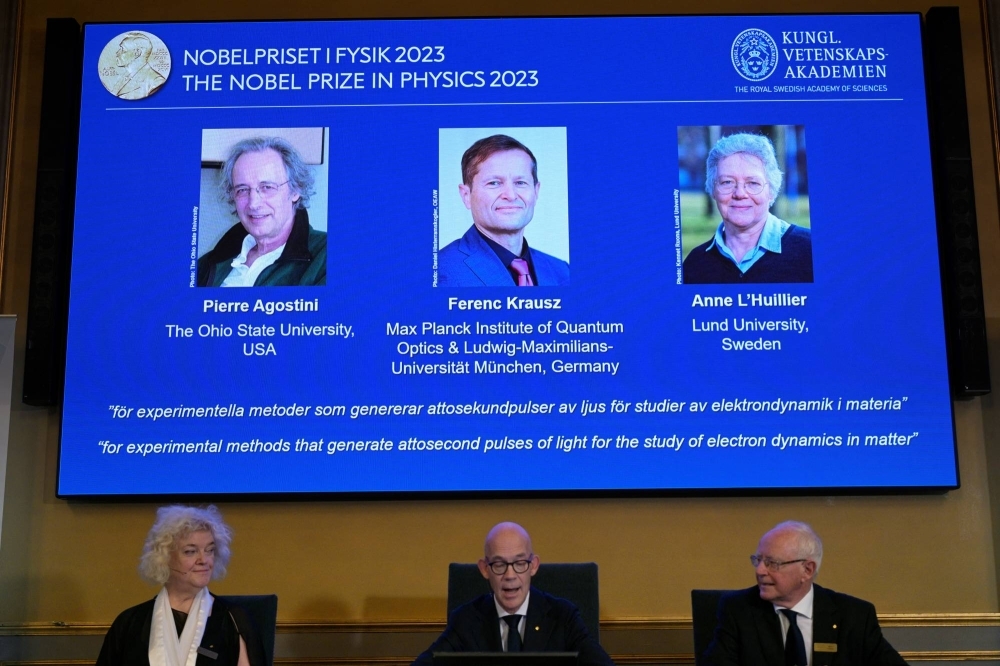The Nobel Prize in physics was awarded to Pierre Agostini, Ferenc Krausz and Anne L’Huillier on Tuesday for work that has “given humanity new tools for exploring the world of electrons inside atoms and molecules,” the Royal Swedish Academy of Sciences said.
The laureates "demonstrated a way to create extremely short pulses of light that can be used to measure the rapid processes in which electrons move or change energy," the academy said. “Fast-moving events flow into each other when perceived by humans, just like a film that consists of still images is perceived as continual movement. If we want to investigate really brief events, we need special technology.”
Following Tuesday’s announcement, 62 women have won Nobel Prizes, with physicist and chemist Marie Curie winning twice. However, including L’Huillier on Tuesday, only five have won in the physics category, while just two have taken home the economics prize.



